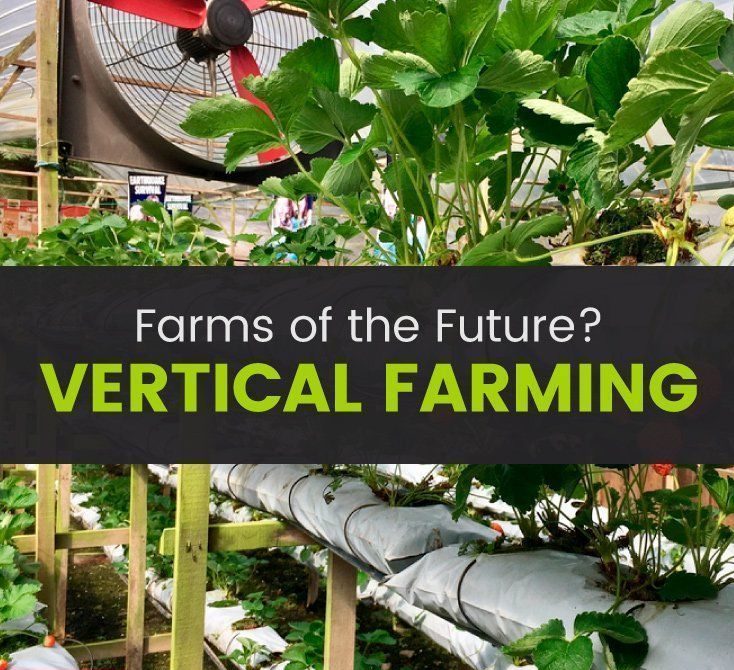
Vertical Farming Trends for the Next Decade
Introduction
Vertical farming is an innovative approach to agriculture that involves growing crops in vertically stacked layers. This method utilizes advanced technologies and controlled environments to optimize plant growth and maximize productivity. In the next decade, vertical farming is expected to play a crucial role in addressing the challenges of food security, resource scarcity, and environmental sustainability. This article explores the historical background, key concepts, main discussion points, case studies, current trends, challenges, and future outlook of vertical farming.
Historical Background
Vertical farming has its roots in ancient civilizations, where terraced farming was practiced on hilly terrains to maximize land use. However, the concept of modern vertical farming emerged in the early 20th century with the development of greenhouse technologies. Over time, vertical farming has evolved significantly, incorporating advanced techniques such as hydroponics, aeroponics, and controlled environment agriculture. Today, vertical farming is gaining prominence in the agricultural industry as a sustainable solution for food production.
Key Concepts and Definitions
Vertical farming refers to the cultivation of crops in vertically stacked layers or structures, often indoors. This method allows for year-round production, irrespective of external climate conditions. Key terms and concepts associated with vertical farming include hydroponics, which involves growing plants in nutrient-rich water, and aeroponics, which uses a misting system to deliver nutrients directly to plant roots. Controlled environment agriculture refers to the manipulation of environmental factors such as temperature, humidity, and lighting to optimize plant growth.
Main Discussion Points
Technological advancements in vertical farming
Automation and artificial intelligence are revolutionizing vertical farming systems. Robots and automated systems handle tasks such as planting, harvesting, and monitoring plant health, resulting in increased efficiency and reduced labor costs.
Advanced sensors and data analytics enable precise monitoring of plant conditions, facilitating optimized nutrient delivery, water management, and pest control.
Sustainable practices in vertical farming
Resource conservation is crucial in vertical farming systems. Water and energy efficiency measures, such as recirculating irrigation systems and LED lighting, ensure minimal waste and lower operational costs.
Vertical farming has the potential to reduce land use and minimize environmental impact by utilizing unused urban spaces and converting vacant buildings into productive farms.
Vertical farming as a solution for urban food production
Vertical farming can address food security and supply chain challenges in urban areas by enabling local food production. It reduces dependence on long-distance transportation and ensures a fresh and reliable food supply.
Localized food production also reduces the carbon footprint associated with transporting food, contributing to a more sustainable urban environment.
Integration of vertical farming with smart cities
Vertical farming aligns with other smart city initiatives, such as renewable energy generation and waste management. By utilizing renewable energy sources and recycling organic waste, vertical farms contribute to the creation of sustainable and self-sufficient urban ecosystems.
Vertical farming can also enhance the aesthetics and livability of urban areas by transforming unused spaces into green, productive environments.
Case Studies or Examples
Several successful vertical farming projects and companies have emerged worldwide. Examples include AeroFarms in the United States, which utilizes aeroponic technologies to grow leafy greens; Urban Crop Solutions in Belgium, known for their modular vertical farming systems; and Sky Greens in Singapore, which pioneered vertical farming in high-rise buildings.
Current Trends or Developments
Recent advancements in vertical farming technology include innovations in plant genetics, lighting systems, and nutrient delivery methods. Researchers are exploring the use of genetically modified organisms (GMOs) to enhance crop yields and resilience. Furthermore, the development of efficient LED lighting systems and specialized nutrient formulations is improving plant growth and reducing resource consumption.
Challenges or Controversies
Vertical farming faces challenges such as high initial costs, limited scalability, and the need for skilled labor. The initial investment required to set up a vertical farm can be substantial, making it less accessible for small-scale farmers. Additionally, scaling up vertical farming operations while maintaining profitability and ensuring consistent crop quality remains a challenge. Controversies surround the use of GMOs in vertical farming, with concerns raised about potential environmental and health risks.
Future Outlook
In the next decade, vertical farming is projected to experience significant growth and adoption. The increasing global population, urbanization, and climate change will drive the demand for sustainable and efficient food production methods. Collaboration and partnerships between vertical farming companies and other industries, such as technology and urban planning, will be crucial in advancing the field and achieving sustainable urban food systems.
Conclusion
Vertical farming presents a promising solution to the challenges faced by traditional agriculture. Its potential to increase food production, conserve resources, and reduce environmental impact makes it a significant trend for the next decade. Further research and exploration of vertical farming are encouraged to unlock its full potential and ensure a sustainable future for food production.
References
Despommier, D. (2010). The vertical farm: feeding the world in the 21st century. St. Martin’s Griffin.
Sivamani, E., & Jaisankar, I. (2019). Vertical Farming: A Sustainable Solution for Food Security. International Journal of Pure and Applied Mathematics, 120(6), 613-625.
Zografakis, N., Katsoulas, N., Kavallari, A., & Stamatopoulos, N. (2021). Vertical farming as a tool of promoting urban sustainability: A review of the environmental impacts and the social acceptability. Science of The Total Environment, 766, 142536.